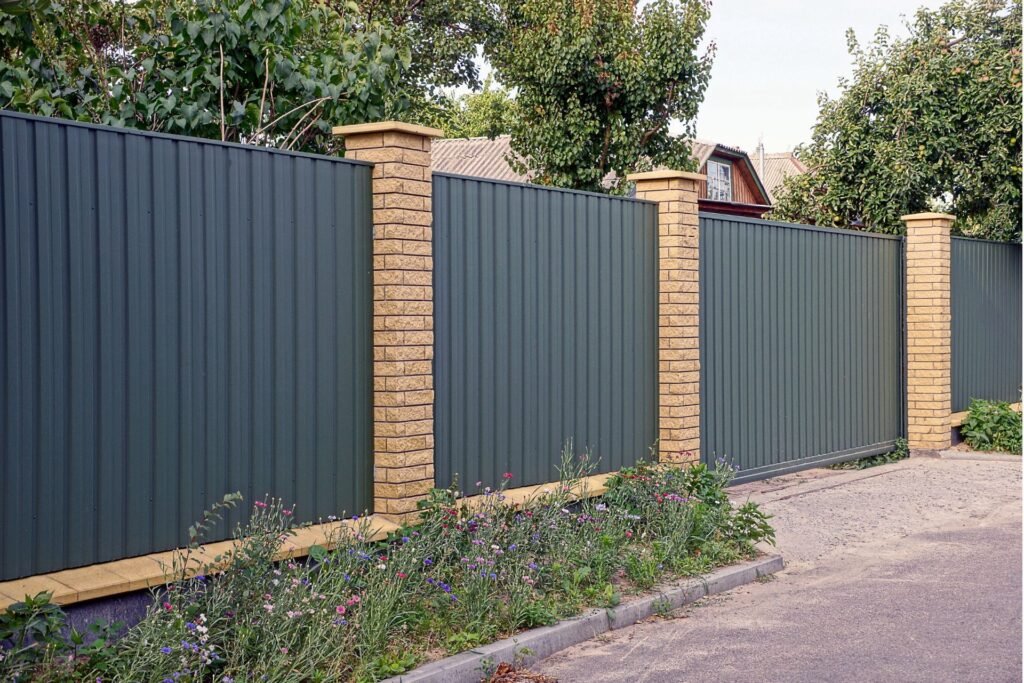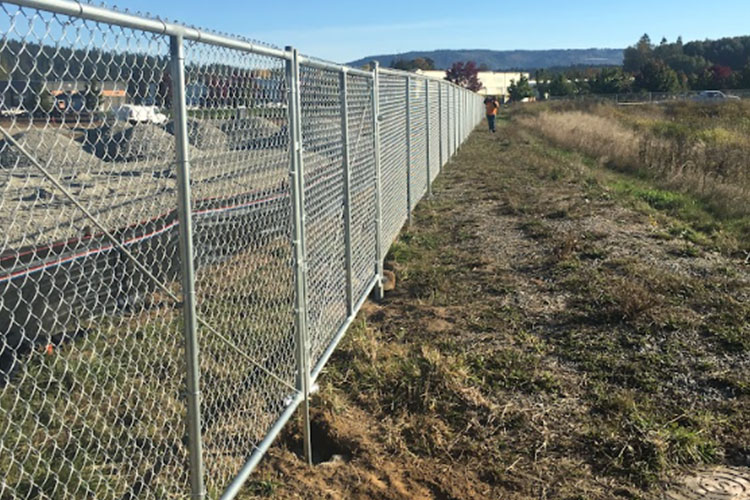The Ultimate Fence Maintenance Checklist From Top Fence Contractors
The Ultimate Fence Maintenance Checklist From Top Fence Contractors
Blog Article
A Comprehensive Overview to Fencing Install: What You Required to Learn About Fencing Provider
When it comes to installing a fencing, you have actually obtained a whole lot to consider. You'll need to analyze your building and make a decision if you desire to take on the installation on your own or work with a professional.
Understanding Various Kinds of Secure Fencing Products
When you're picking a fencing, recognizing the different sorts of secure fencing materials is important. Each product offers unique benefits and downsides, impacting your choice. Timber provides a classic appearance and can be personalized, but it needs normal upkeep and may rot gradually. Plastic is low-maintenance and sturdy, standing up to fading and bugs, but it can be costlier upfront. Chain-link secure fencing is economical and practical for enclosing huge locations, though it does not have personal privacy and aesthetic appeal. Metal fencing, like wrought iron or light weight aluminum, offers strength and beauty yet may require rust protection. Composite products blend the ideal of wood and plastic, supplying longevity with an all-natural look. Consider your budget, wanted visual appeals, and maintenance choices when examining these alternatives. Ultimately, choosing the ideal product will aid you produce a fencing that satisfies your requirements and enhances your residential property's worth.
Examining Your Property and Fencing Requirements
Before you begin your fencing installment, it's necessary to analyze your home limits and the objective of your fencing. Recognizing regional guidelines and licenses will likewise assist you prevent any legal issues down the line. By thinking about these aspects, you'll ensure your fencing satisfies both your demands and community requirements.
Residential Or Commercial Property Limits and Lines
Comprehending your residential or commercial property borders is vital for an effective fencing installment, as it not only aids you figure out where your fencing will go yet likewise assures you're respecting your next-door neighbors' space. Start by reviewing your residential property deed or study, which usually lays out the specific limits. You might likewise wish to speak with a specialist land surveyor if you're uncertain.
Remember, regional zoning legislations may dictate fence positioning and elevation, so check those policies as well. Taking these actions guarantees your fencing is effectively positioned and certified, making the whole procedure smoother for you.
Objective of Secure Fencing
Fence serves multiple purposes that can substantially boost your residential or commercial property. First, it gives protection by creating a barrier that hinders invaders and protects your valuables. Second, it offers personal privacy, permitting you to enjoy your outdoor area without fretting about spying eyes. Third, secure fencing can define your property borders, making it clear where your area ends and your neighbor's starts. Furthermore, it can enhance the aesthetic allure of your home, including personality and style while boosting aesthetic appeal. Lastly, a well-placed fence can aid handle sound from neighboring roads or next-door neighbors and even keep pet dogs and youngsters secure. By reviewing your details requirements, you can select the appropriate type of fence to attain these advantages successfully.

Local Rules and Permits
How can you ensure your fencing installation conforms with local regulations? Some locations require permits for any kind of brand-new fence, while others might just need them for taller frameworks.
Additionally, consider residential or commercial property lines and any type of easements on your land. Marking your limits can protect against disputes with next-door neighbors or potential legal problems. By recognizing these policies ahead of time, you can stay clear of pricey errors and establish your fencing is built to last, enhancing both your building's worth and your assurance.
Local Rules and Permits for Fence
Before you start your fence job, it is essential to inspect local policies and obtain any kind of essential authorizations. Each city or county has its own guidelines regarding fence elevation, materials, and positioning. These guidelines assure that your fencing abides by safety standards and neighborhood appearances.
Start by visiting your regional zoning office or their site to find specific requirements. Fence Builders. You may need to send a fence strategy, outlining dimensions and products. Some areas might even call for a study to confirm property limits. Do not neglect to think about any type of house owners' association (HOA) guidelines, as they can enforce added restrictions.
Neglecting to comply with these regulations can bring about fines or required removal of your fence, squandering both money and time. So, put in the time to research and secure the proper authorizations for a smooth installation procedure. This action is crucial in making sure your project lines up with local regulations and area requirements.
Selecting Between DIY Setup and Professional Services
Are you thinking about whether to tackle the fencing installment yourself or hire a specialist? If you're handy and have experience with similar jobs, Do it yourself may conserve you money.
Next, consider the moment dedication. Installing a fence requires time, and if you're managing an active schedule, hiring a specialist can guarantee it obtains done efficiently. Additionally, consider the intricacy of the project. If your yard has challenging terrain or certain layout requirements, experts bring expertise that can make a difference.
Last but not least, factor in local laws. A professional knows the permits and codes needed, helping you avoid potential penalties. Inevitably, evaluate your skills, time, complexity, and regulations to make the best choice for your secure fencing task.
Step-by-Step Overview to Fencing Setup
When you've chosen to move on with your fencing setup, following a structured detailed strategy will guarantee a smooth process. Beginning by noting the look at this website fence line with stakes and string to visualize the format. Next off, check regional policies to validate compliance with height and property lines.
Dig blog post openings at the very least two feet deep, spaced according to your fencing type-- normally 6 to 8 feet apart. Place the posts right into the openings and fill them with concrete for security. As soon as the blog posts are established, attach the straight rails or panels, seeing to it they're level.
Check for any kind of loosened connections and make necessary modifications. Your fencing should currently be ready to improve your residential or commercial property and offer the personal privacy or protection you need!
Upkeep Tips for Long Life of Your Fencing
To maintain your fence looking fantastic and lasting much longer, normal upkeep is vital. You should establish a cleansing timetable, examine for any type of damage, and use safety coverings as needed. By staying proactive with these tasks, you'll assure your fence remains strong and appealing for many years to find.
Normal Cleaning Arrange
Start by rinsing your fencing with water at the very least when every period to get rid of dust and particles. Don't forget to check for any kind of corrosion on metal fencings; a cable brush can assist remove it, followed by a coat of rust-resistant paint. Maintaining your fencing clean not only enhances its look yet likewise extends its life, conserving you money in the lengthy run.
Evaluate for Damages
Routinely checking your fence for damages is crucial if you want to maintain its honesty and durability. Start by walking your fencing to search for visible indicators of wear, such as fractures, loose boards, or corrosion. Pay special focus to the base and blog posts, where dampness can create considerable issues. If you observe any damages, remember and determine the necessity of repair services. Dealing with tiny problems without delay can avoid them from escalating right into larger, a lot more costly troubles. Look for any type of indications of insects, like termites or woodpeckers, that can compromise your fencing's structure. Finally, verify that your fence remains secure by looking for any kind of leaning or drooping areas. Routine inspections will maintain your fencing looking wonderful and operating appropriately for years ahead.
Apply Protective Coatings
After inspecting your fencing for damages, using protective finishings is a crucial step in ensuring its durability - Fence Contractors. If your fencing is vinyl or metal, consider a UV-protective spray or paint to protect against fading and corrosion.
Make certain to clean the surface extensively prior to application, as dirt and grime can undermine the coating's effectiveness. Apply the coating in dry climate for far better bond, and don't forget read to comply with the supplier's directions for the ideal outcomes. Regularly reapply every couple of years to keep your fencing looking fantastic and useful source standing solid against the aspects.
Cost Considerations and Budgeting for Your Fencing Project
When intending your fencing job, comprehending expense factors to consider is vital to remaining within budget. Beginning by determining the kind of material you desire, as costs can vary considerably between wood, vinyl, and steel. Don't neglect to consider labor prices-- hiring professionals might save you time but can enhance your general expenditures.
Next, gauge your residential property to compute the straight footage required, as this straight effects material prices. In addition, take into consideration any kind of permits you could require, which can add to your budget plan.

Finally, it's a great idea to allot a contingency fund for unexpected expenses. By intending thoroughly and taking into consideration these aspects, you can develop a sensible spending plan that satisfies your fence needs without damaging the bank.
Frequently Asked Inquiries
The length of time Does the Ordinary Fence Setup Take?
The standard fence installment generally takes one to three days, relying on the fence kind and size of your yard. You'll need to think about any kind of delays as a result of weather or permit demands too.
What Should I Do if My Fence Is Harmed?
If your fencing is harmed, initially analyze the degree of the damages. Repair small concerns on your own, however for significant troubles, consider speaking to an expert. Don't wait too long; it'll assist protect against better issues.
Can I Mount a Fence on a Slope?
Yes, you can install a fencing on an incline. You'll require to readjust your installment technique, either by tipping the panels down or using a racked design to assure security and appropriate positioning with the terrain.
What Are the very best Practices for Fencing Paint?
To repaint your fence efficiently, start with proper cleaning and sanding. Use premium paint and use in even strokes. Do not fail to remember to select the best weather condition for paint, guaranteeing it's completely dry and moderate.
Just how Usually Should I Examine My Fence?
You ought to check your fence at the very least twice a year, concentrating on indications of damages, rot, or rust. Routine checks assist you catch issues early, guaranteeing your fencing remains durable and aesthetically enticing longer.
Report this page